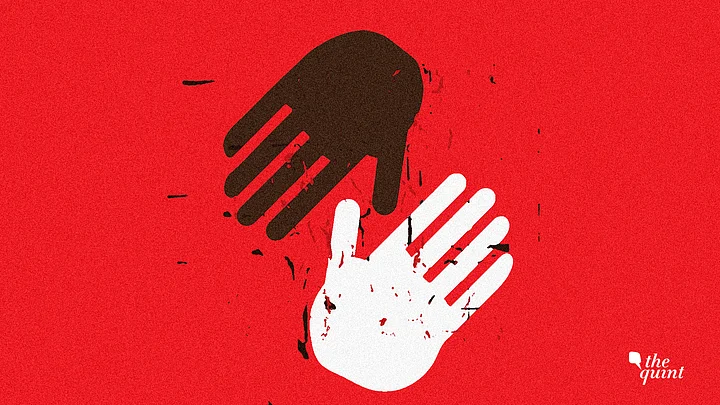Racial discrimination in India is largely considered unidirectional in nature wherein, it is implicitly understood to be practiced against the Sino-Tibetan or Austro-Asiatic ethno-linguistic groups, especially, when they move to “mainland” India.
This understanding of racial discrimination is largely true, and cases such as that of Nido Tania, showcase this as a reality. However, this view alone is too narrow in its understanding of discrimination.
How ‘Reverse Discrimination’ Works
Racial discrimination is largely perpetuated by a majority group against a minority group. The discrimination against northeast folks in many parts of India is a classic example.
However, within the northeast region, this dynamic flips and the indigenous ethnic groups form the majority, while the minority groups comprise other communities such as the Punjabis, Biharis, Bengalis, Malayalis and Marwaris. In this light, it is also important to understand how this ‘reverse discrimination’ works in the northeast.
The example of Sikkim could be considered here, because Sikkim merged into India in 1975 and therefore, has had the least amount of time, compared to other northeastern states, to integrate itself with the rest of the “Indian” communities. This, although close to 400 Indian families have been living in Sikkim prior to 1975. Additionally, Sikkim is of greater significance here as it has a peculiar problem in terms of citizenship.
Sikkim’s Citizenship Conundrum
The Chogyal (Maharaja) of Sikkim, in 1961, asked the people living in Sikkim to register themselves as his subjects. In order to do so, they had to forfeit property in their country and renounce citizenship. Around 400 Indian families, known as the “old settlers” living in Sikkim, deliberated with the Indian political officer in Sikkim, and decided to forego becoming Sikkim subjects and remain Indian citizens.
Little did they realise then, how this decision and the Sikkim subject issue, would come to be used as a tool to inflict discriminatory rules on their forthcoming generation(s).
Trouble started to brew in 2008 when the then Union Finance Minister P Chidambaram, proposed the finance bill in order to continue the income tax exemption for Sikkimese individuals. He defined the term ‘Sikkimese’ as subject holders only, excluding the old settlers from it. Further, the old settlers were asked to pay income tax retrospectively from 1991 because suddenly, they weren’t Sikkimese anymore.
If an individual lives in any state in India for 15 years or more, they are considered as domiciles of the state except in Sikkim, where even 150 years of settlement is not enough.
Old-Settlers vs Sikkimese ‘Subjects’ Divide
This issue was escalated to the Rajya Sabha and the Supreme Court. Both these institutions ruled in favour of the old settlers. The upper house in its mandate mentioned that “… the discrimination has widened with the enactment of the Finance Act, 2008… individuals are enjoying better privileges in the state of Sikkim in comparison to the 400 families which has created a sense of discrimination and alienation…”
In response to these verdicts, the Government of Sikkim created the residential certificate (RC) for the 400 families. This document provided income tax exemption and allowed for purchase of land in urban areas only. These individuals were not allowed to purchase land in rural areas, the rationale being protection of indigenous populations, but this only furthered discrimination.
Further, the RC provided only these benefits, while other benefits provided by the Government of Sikkim such as CMMSS, were only available to the Sikkim ‘subjects’. Additionally, there is 93 percent reservation in government services, and old settlers do not form a part of this either. Attempts to discriminate against the old settlers in some manner or the other are routine.
Unequal Political Participation, Further Racial Divide
In 1985, Balchand Sarda won as an independent candidate from the Gangtok constituency, as the majority here consisted of the old settlers. However, this wasn’t received well, and in subsequent years, changes were made to reduce this political strength (of old-settlers in that area), where eventually, the constituency itself was separated into two parts, in order to divide votes, and one of the MLA seats was converted to a reserved seat for the Bhutias-Lepchas.
There are many such instances of discrimination one can see in Sikkim.
In the socio-economic survey of 2006, 50,000 individuals belonging to migrant Indian communities were marked under the “others” category, while in the same document, 176 members of the Dewan community were placed in a separate category. If state infrastructure allowed for 176 people to be categorised, why weren’t the 50,000?
‘If You Aren’t a Vote Bank, You Don’t Matter’
Racial slurs against individuals from the northeast are commonplace in many parts of India, but thankfully they are considered as criminal offences. However, racial slurs against non-northeastern Indian migrants in Sikkim such as ‘Kaiyan’, ‘Madhise’, ‘Dhoti’, and so on, are not deemed as criminal offences under law. Because apparently, in comparison, these slurs in Sikkim are not as discriminatory or hurtful as the ones hurled at those belonging to the northeast.
Sikkim is only one example of the existence of the “reverse racial discrimination” in India, but unfortunately, this is ignored, and that is an unhealthy sign in a democracy – if you aren’t a vote bank, you don’t matter.
(The author is an Assistant Professor at Christ University, Bengaluru and is also pursuing a PhD on a topic related to this article. This is a personal blog and the views expressed are the author’s own. The Quint neither endorses nor is responsible for them.)
(At The Quint, we question everything. Play an active role in shaping our journalism by becoming a member today.)
